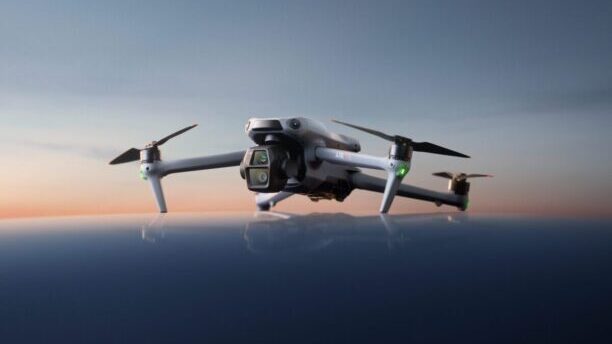The U.S. drone market is experiencing a seismic shift as DJI, the world’s leading drone manufacturer, faces mounting obstacles to selling its products to American consumers. While no formal government ban has been announced, a confluence of legislative, regulatory, and supply chain pressures has made it increasingly difficult—if not impossible—for U.S. buyers to obtain DJI drones through traditional retail channels.


DJI’s Market Dominance and Regulatory Headwinds
DJI’s dominance in the drone sector is well-documented, with some estimates placing its U.S. market share as high as 85%. The company’s consumer and enterprise drones have long been favored for their robust functionality at competitive prices, making them the default choice for everyone from hobbyists to public safety agencies. However, this dominance has also drawn heightened scrutiny from U.S. lawmakers and regulators, who argue that such reliance on a single foreign vendor poses both security and supply chain risks.
Over the past several years, the U.S. government has taken incremental steps to limit DJI’s presence. Initial measures focused on restricting DJI drone use within the military and certain federal agencies. The most significant recent development is the passage of the FY25 National Defense Authorization Act (NDAA), which mandates a formal security audit of DJI platforms by the end of 2025. If the audit is not completed—or if DJI fails to pass—it will be automatically placed on the Federal Communications Commission’s (FCC) “Covered List,” effectively grounding new DJI products by denying them access to FCC-regulated bandwidth.
Customs Scrutiny and Supply Chain Disruptions
In parallel with legislative action, DJI’s supply chain has come under intense scrutiny by U.S. Customs and Border Protection (CBP). Rumors and reports surfaced in late 2024 that CBP was detaining shipments of DJI drones, citing the Uyghur Forced Labor Prevention Act (UFLPA). The UFLPA presumes that goods made wholly or in part in China’s Xinjiang region, or by certain listed entities, are produced with forced labor and are therefore inadmissible into the U.S..
However, it is important to note that DJI is not currently on the UFLPA Entity List published by the Department of Homeland Security. DJI has repeatedly and categorically denied any association with forced labor, stating that all manufacturing is based in Shenzhen or Malaysia, with no facilities or sourcing in Xinjiang. The company describes the customs issue as a “misunderstanding” and says it is working with CBP to resolve the situation.
Despite these assurances, shipments have been inconsistently blocked, leading to widespread shortages. Media outlet DroneDJ reports that of late June 2025, DJI’s official U.S. online store is largely empty. According to a recent article in The Verge, major retailers such as Best Buy, Amazon, B&H Photo, and Adorama report near-total depletion of DJI drone stock. These retailers have denied any official exit by DJI, but confirmed the lack of available inventory.
The Mavic 4 Pro: A No-Show in the U.S.
The supply crunch has been exacerbated by DJI’s decision not to launch its latest flagship, the Mavic 4 Pro, in the U.S. market. While the drone has garnered rave reviews internationally for its technological advancements—including a 100MP Hasselblad camera and advanced gimbal system—U.S. consumers have been unable to purchase it through official channels. DJI attributes this decision to a combination of high tariffs, unpredictable customs enforcement, and political uncertainty, all of which have made it financially and logistically unfeasible to introduce the new model in the U.S.
Distributors and Consumers Left in Limbo
While none wanted to speak publicly about the situation, distributors and resellers report significant difficulties in obtaining DJI products, with many shipments delayed or blocked at the border. Some have attempted workarounds, but these efforts have not resolved the underlying supply issues. The lack of clear, publicly announced policy from U.S. authorities has only added to the confusion, leaving both businesses and consumers in a state of uncertainty.
Security Concerns and Industry Implications
U.S. policymakers have justified these actions by citing national security concerns, specifically the risk that Chinese-made drones could be used for espionage or data exfiltration. While DJI has introduced features like “Local Data Mode” and third-party software compatibility to address these concerns, the debate over the company’s security posture remains unresolved.
Beyond security, the situation has exposed the risks of overreliance on a single vendor. With DJI’s market share so dominant, the current disruption serves as a stark reminder of the need for a more diversified and resilient domestic drone industry. U.S. manufacturers may now have an unprecedented opportunity to scale up and compete—if they can match DJI’s combination of price and functionality.
A New Era of Uncertainty
For now, DJI drones remain technically legal for civilian use in the U.S., and no formal nationwide ban is in place. However, the practical reality is that obtaining a new DJI drone has become significantly more difficult, with stockouts across official and third-party channels and no clear timeline for resolution. Whether this is a temporary disruption or the beginning of a long-term market realignment will depend on the outcome of the mandated security audit, ongoing customs enforcement, and the ability of domestic manufacturers to fill the gap.


Miriam McNabb is the Editor-in-Chief of DRONELIFE and CEO of JobForDrones, a professional drone services marketplace, and a fascinated observer of the emerging drone industry and the regulatory environment for drones. Miriam has penned over 3,000 articles focused on the commercial drone space and is an international speaker and recognized figure in the industry. Miriam has a degree from the University of Chicago and over 20 years of experience in high tech sales and marketing for new technologies.
For drone industry consulting or writing, Email Miriam.
TWITTER:@spaldingbarker
Subscribe to DroneLife here.


